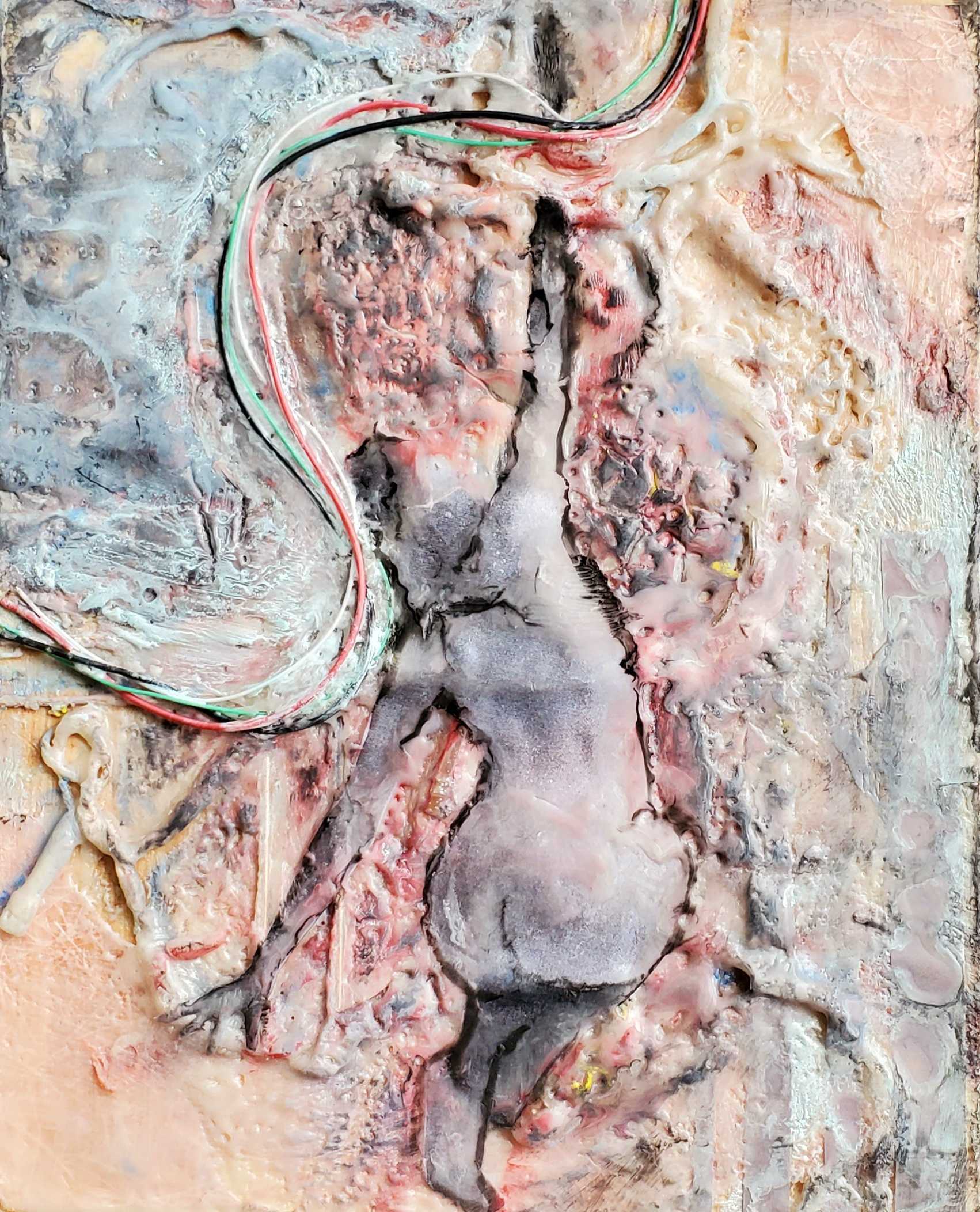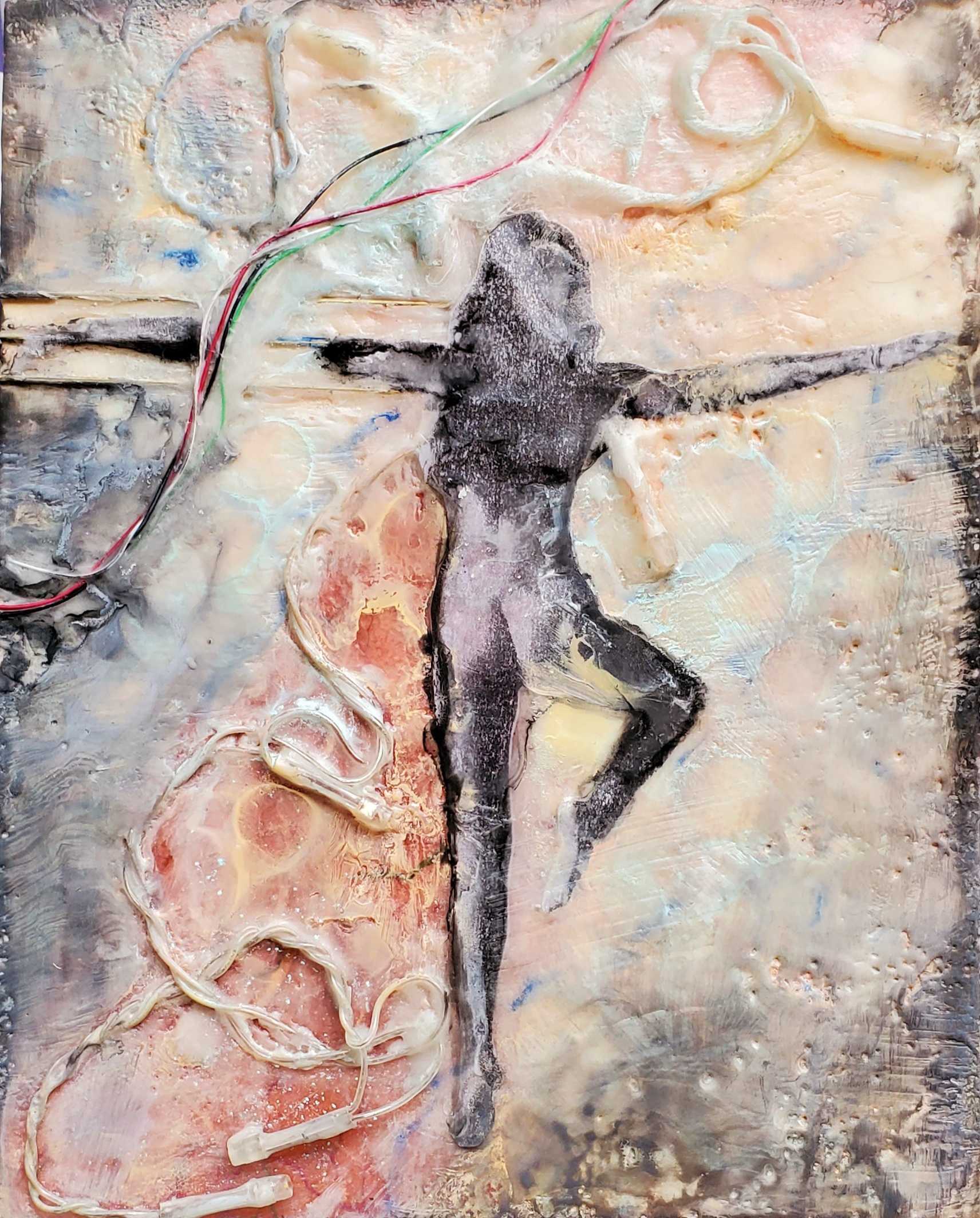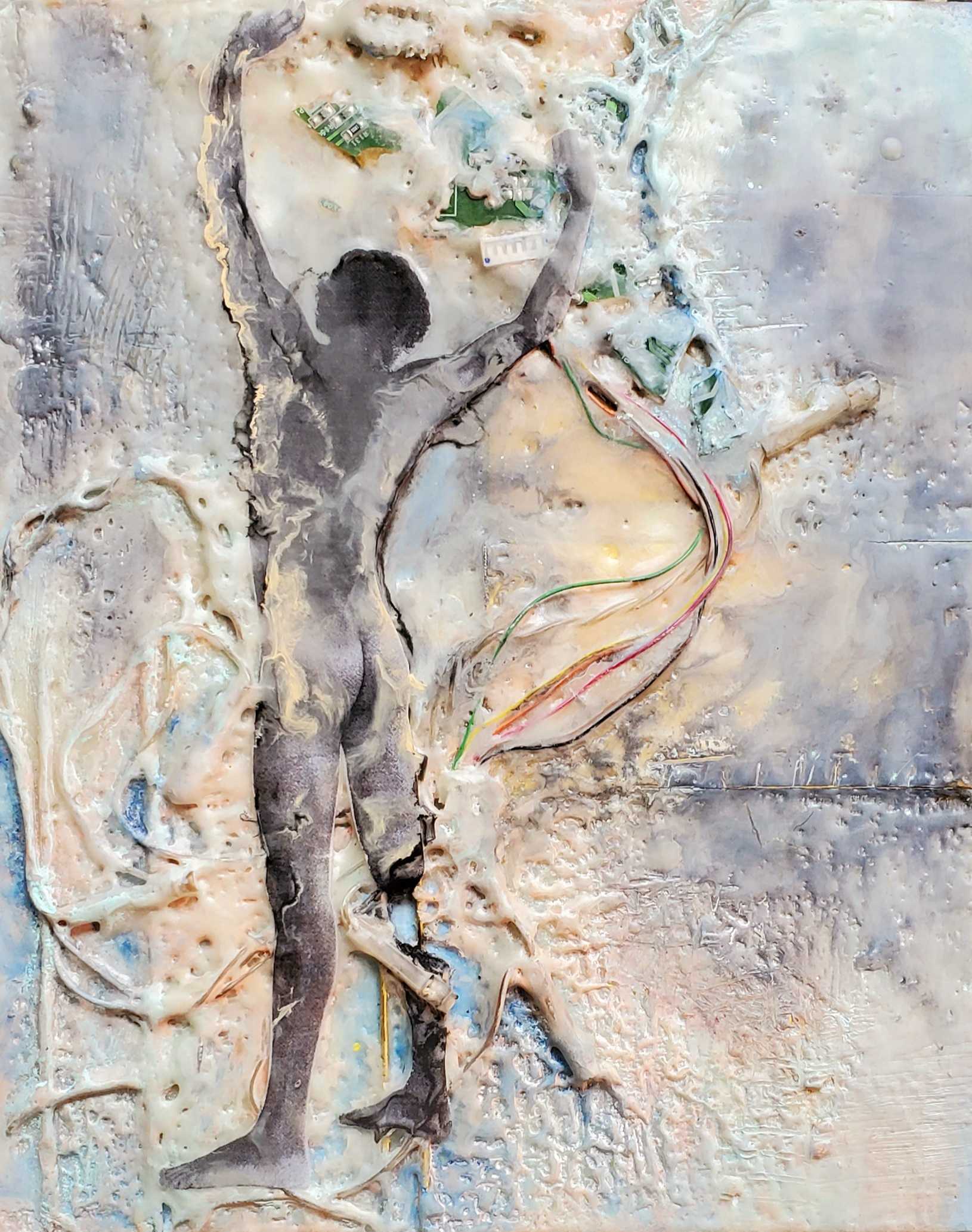In September 1863, George Dedlow awoke in an army hospital tent [1]. As he regained his bearings, he felt a sharp cramp in his left leg. Dedlow tried to reach to rub it but was still too weak to move. Instead, he called for an attendant.
“Just rub my left calf, if you please.”
“Calf? You ain’t none. It’s took off.”
Dedlow thought that the attendant was wrong, as he could vividly feel his aching leg lying under his blanket. Sensing his disbelief, the attendant removed the blanket and revealed that both of Dedlow’s legs had been amputated at the thighs. His calves were gone, but the pain still remained [1].
In The Case of George Dedlow, neurologist Silas Weir Mitchell presented the first description of this strange syndrome [2]. George Dedlow, a fictitious character, represents the stories of the masses of soldiers who lost their limbs in the carnage of the Civil War [1]. Mitchell’s description revealed that many amputees not only feel that their missing limbs still exist, but they also experience intense pain and distress.
This strange phenomenon of feeling sensations in a body part that no longer exists is called phantom limb syndrome. While it occurs most commonly in limbs, this syndrome can appear in other amputated body parts such as breasts, eyes, tongues, and teeth [3]. It is surprisingly common, occurring in about 85% of amputees for months, years, or even decades after amputation. Most patients experience kinetic sensations – perceiving movement in the missing limb – whether it is by swinging the phantom arm while walking or accidentally reaching for a coffee cup [3]. Others might feel that the limb is stuck in an uncomfortable position, paralyzed in space [4]. Patients living with phantom limbs can experience itching, tingling, cramping, throbbing, and other uncomfortable sensations, often for multiple hours [3]. One commonly reported sensation is the excruciating pain of fingernails digging into the palm while being unable to relax the hand. Some patients may also experience phantom sensation reminiscent of what they were doing prior to the amputation. For instance, military amputees might experience phantom cramping, as though they were clutching a grenade or firing a rifle. Or, they might experience discomfort in a phantom foot from boots compressing missing toes too tightly [3]. Overall, compared to other amputees, patients with phantom pain often report poorer quality of life, worsened mental health, and greater difficulty adjusting to prosthetics [4]. Studies have linked phantom limb pain to negative emotional coping strategies, and chronic depression and anxiety [5].

In the story, Dedlow was quite certain that his phantom pain was caused by irritation of scar tissue and clumps of severed nerves, known as neuromas, in the stump of the amputation [1]. He reasoned that his amputated nerve endings had been “enlarged and altered”, causing irritation in the stump [1]. However, when neuromas were removed surgically, most patients received only temporary relief, with pain returning gradually [2]. This led to a cycle of surgery and pain, as the doctors tried to heal the neuroma with repeated amputations and little success. While the role of neuromas in phantom limb pain is still being researched, there is a general consensus that the syndrome is not exclusively tied to the stump [2]. Instead, more recent research has indicated that phantom pain is connected to higher cortices of the brain.
For years, it was believed that neural pathways in the human brain could not be established after infancy. However, a landmark study in 1983 showed that monkeys’ brains can reorganize after injury, a finding that was confirmed in various animals in further studies [6].
This process of neural reorganization is called remapping, which can be adaptive or maladaptive [7]. It can facilitate sensory discrimination, advanced musical training, and recovery from stroke, but it can also cause unfortunate maladaptive changes like tinnitus (hearing constant noise in the ears), focal dystonia (involuntary muscle contractions), and phantom limb pain. In fact, severity of phantom limb pain has a direct correlation with the amount of remapping that occurs [7].
When a limb is amputated, the area of the brain that responds to sensory stimuli from that limb is deprived of its usual sensory input [7]. This is because the neural pathways connecting these limbs are gone. Consequently, neurons in these brain areas remap to become responsive to stimuli from other existing body parts. For instance, if an arm is amputated, the neurons that respond to arm-related stimuli cease to have sensory input. So, they start to respond to the nearby areas of the brain, namely the face and upper arm since they are located adjacent to the hands in the primary sensory cortex.
This example was demonstrated in a fascinating experiment on V.Q., a 17-year-old lower-arm amputee [2]. The experiment was simple: brush a Q-tip on various parts of the patient’s body and ask where he feels the sensation. Most body parts responded normally, but when the Q-tip touched areas on his face and upper arm, V.Q. reported that he felt the sensation on his existing face/upper arm as well as his phantom limb. The feeling wasn’t randomized; through some experimentation, it was possible to draw which areas on the face and upper arm correlated to which parts of the phantom arm [2]. Consequently, if V.Q. ever feels an itch on his phantom arm, he could use this new sensory map to find exactly where to scratch on his face.
Remapping occurs rapidly, over the course of a few hours to weeks after amputation, demonstrating the power of plasticity in the brain [7]. Scientists are currently researching the mechanisms behind phantom limb remapping. Thus far, it has been attributed to axonal sprouting (growing sprouts from the axon of the neuron to make new connections) and the unmasking of existing connections that would naturally be inhibited [7]. Study of this topic can not only help uncover the cause of phantom limb pain, but also illuminate overarching principles behind remapping and neural plasticity.
In contrast to the complexity of remapping, the most popular therapy for phantom limb pain is quite simple. Mirror-box therapy was developed by neuroscientist V.S. Ramachandran in the 1990s and utilizes a half-open box divided by a mirror [2]. The amputee places their good arm in the open part of the box and the remainder of their amputated arm in the closed side. From their position, they can see their good arm on the open side and a mirror image of their arm on their amputated side. Next, patients are asked to move their intact and amputated arms in unison. Through this optical illusion, the patient both feels and sees their missing hand moving [2].

Patient D.S., a 38-year-old male who had his arm amputated a decade prior, was one of the first test subjects of this treatment [2]. Prior to treatment, D.S. experienced pain in his missing elbow multiple times a day and felt extremely bothered by the feeling that his limb was paralyzed in space. However, when D.S. put his arms into the mirror box contraption and tried to move his “hands” in unison, he could suddenly perceive movement in his phantom arm; he felt like his arm was “plugged in again”. Unfortunately, when D.S. removed his arms, his phantom limb refroze. Even so, after using the mirror-box treatment for 15 minutes each day for three weeks, he reported a strange finding: his pain had disappeared along with the phantom arm, leaving only his phantom hand dangling from the shoulder. Because he didn’t perceive his phantom elbow anymore, he stopped feeling pain there. This phenomenon of shrinking limbs is called telescoping [2].
While this case had a positive outcome for the patient, recent studies suggest that mirror therapy is ineffective with telescoping limbs [8]. Additional limitations of this therapy are that the patient is restricted to a narrow space to move and the illusion can be broken by simply glancing at the missing limb [5]. Hence, some researchers have turned to immersive virtual reality (IVR) to create a more effective mirror box experience. So far, IVR has shown promising results, being quite effective at alleviating phantom pains. It has also shown to significantly increase quality of life and positive coping strategies while decreasing pain-related thoughts. Despite the positive results, there are some concerns that IVR could emphasize perceived bodily distortions like telescoping and exacerbate depressive symptoms [5]. Research in IVR continues to ensure that it is a safe and effective treatment.
Another potential treatment for phantom limb pain is far infrared (FIR) rays [9]. FIR rays are high frequency infrared radiation that has previously been used by astronomers to detect dense collections of stars and by biomedical researchers as a heat-based therapy to lessen muscle contractions. In the study, scientists found subjects with varying amputation history, age, and gender with recorded history of severe phantom limb pain and applied FIR rays to their phantom limb site. During treatment, the patients reported feeling slight warmth on their phantom limb site (not the stump). After only 8 treatments, patients reported a 62-83% decrease in pain. In a follow-up six years after the treatment, the patients reported that their phantom limb pain had mostly disappeared with only very sporadic recurrences. Although the mechanism of this treatment is unclear, scientists are continuing research to understand and enhance this study further [9].
Research regarding phantom limbs is both important and promising. Understanding the mechanisms behind this phenomenon has the potential to help the millions of amputees suffering from phantom limb pain across the world and increases their overall quality of life. Phantom limbs also allow researchers a unique way to explore the mechanisms of remapping and neural plasticity. It is an exciting opportunity to learn more about the development of our brain.
References
- Mitchell, S. W. (n.d.). The Autobiography of a Quack, and The Case of George Dedlow. Project Gutenberg.
- Ramachandran, V. (1998). The perception of phantom limbs. The D. O. Hebb lecture. Brain (London, England : 1878), 121(9), 1603-1630.10.1093/brain/121.9.1603.
- Weeks, Sharon R, Anderson-Barnes, Victoria C, & Tsao, Jack W. (2010). Phantom Limb Pain: Theories and Therapies. The Neurologist (Baltimore, Md.), 16(5), 277-286.10.1097/NRL.0b013e3181edf128.
- Giummarra, M. (2016). Augmented reality for treatment of phantom limb pain—are we there yet? The Lancet (British Edition), 388(10062), 2844-2845.10.1016/S0140-6736(16)32416-3.
- Zanfir, Ana-Maria, Georgescu, Domnita Ilea, Turturica, Sergiu Cristian, Eczedi, Mihaela, & Mironiuc, Aurel. (2017). Immersive VR in Phantom Limb Pain Therapy of Amputee Patients Due to Critical Limb Ischemia. Acta Medica Marisiensis, 63(3), 115-120. 10.1515/amma-2017-0031.
- Kaas, J H, Merzenich, M M, & Killackey, H P. (1983). The Reorganization of Somatosensory Cortex Following Peripheral Nerve Damage in Adult and Developing Mammals. Annual Review of Neuroscience, 6(1), 325-356.10.1146/annurev.ne.06.030183.001545.
- Makin, Tamar R, & Flor, Herta. (2020). Brain (re)organisation following amputation: Implications for phantom limb pain. NeuroImage (Orlando, Fla.), 218, 116943.
- Harvie, D, & Moseley, G.L. (2014). Exploring changes in the brain associated with recovery from phantom limb pain – the potential importance of telescoping. European Journal of Pain, 18(5), 601-602.10.1002/j.1532-2149.2014.00458.x.
- Huang, Chi-Yu, Hsu, Kai-Hsiung, Chen, Jyh-Horng, & Yang, Rong-Sen. (2015). Treating severe phantom limb pain by applying far infrared ray to ‘phantom limb’. Journal of the Formosan Medical Association, 115(3), 215-216.10.1002/j.1532-2149.2014.00458.x.
